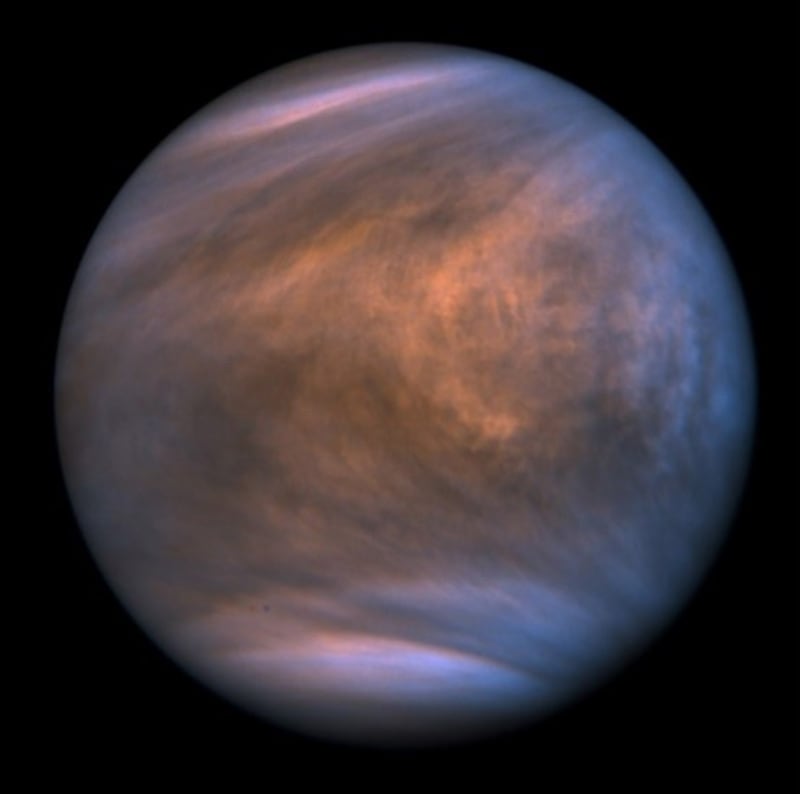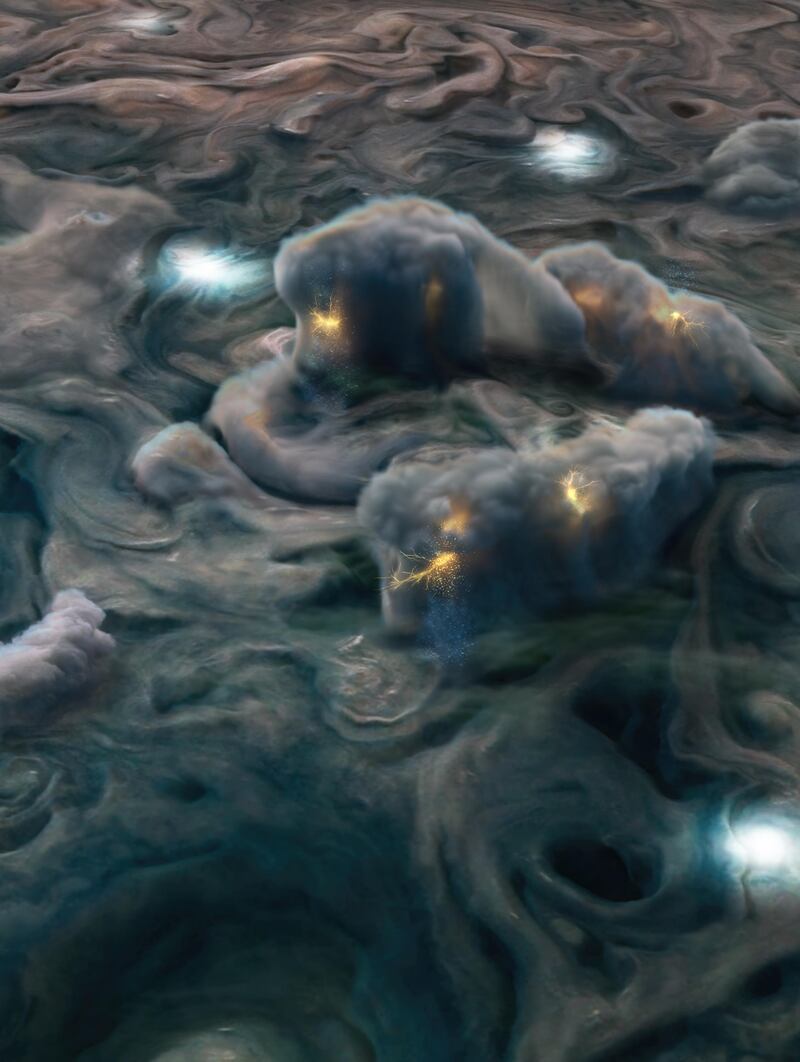The relative availability of water within the clouds of Venus is too low to allow life as we know it to exist, scientists believe.
However researchers said that Jupiter’s clouds have the right water conditions that would allow Earth-like life.
An international team of experts said their findings, published in the journal Nature Astronomy, appear to contradict previous research published last year by a different group of scientists that suggested phosphine gas in Venus’s atmosphere is an indicator of possible life in the planet’s clouds.
Although, on Earth, phosphine is associated with life, many experts have been sceptical about the presence of living organisms in Venus’s clouds, mainly because they are mainly composed of sulphuric acid – which is disastrous for cellular structures that support life.
Dr John E Hallsworth, from the School of Biological Sciences at Queen’s University Belfast, who is one of the authors on the new study, said: “In our study, we looked at the effective concentration of water molecules which we scientifically called water activity.

“Not only we found the effective concentration of water molecules is slightly below what is needed for the most resilient microorganism on Earth, its more than 100 times too low.
“It is almost at the bottom of the scale and an unbridgeable distance from what life requires to be active.”
He added: “One thing which we found which was unexpected was that the clouds of Jupiter actually have the right temperature and water activity combination to support active life.
“We absolutely hadn’t expected that.”
As part of their study, the researchers looked at data from various scientific probes sent to different planets in the solar system.
Study co-author Professor Christopher P McKay, who is a planetary scientist at Nasa’s Ames Research Centre in the US, said: “We derive water activity of atmospheres without a model of any sort, based only in direct observations of pressure, temperature, and water concentration.”
Laboratory studies have shown that life requires a water activity of at least 0.585 for metabolism and reproduction to take place.
The authors found that droplets of sulphuric acid reduce the water activity of Venus’s clouds to below 0.004 – more than 100 times less than the limit for life.
In comparison, water activity in Mars’s clouds is 0.537, while Jupiter’s atmosphere has a biologically permissive water activity of greater than 0.585 for temperatures between -10C and +40C.

Dr Hallsworth said: “I am not suggesting there is life on Jupiter… it would need the right nutrients to be there and I am not sure of that.
“Life doesn’t only need a nice temperature and water availability to be active.
“But still, it is a profound and exciting finding and totally unexpected.”
Prof McKay said the findings for Venus were “unfortunate” because he was “very interested in searching for life on other worlds”.
He added: “Its also unfortunate that our conclusions are based directly on measurements – it is not a model with assumptions so it is hard to imagine that the results will change as we do further exploration.”
However, the researchers said the methods used in their study can also be used to determine water activity in the atmospheres of planets beyond the solar system, and help narrow down the search for alien life.
The findings come after Nasa and the European Space Agency recently announced three missions to Venus in the coming years.








